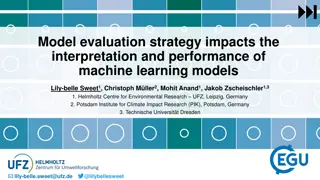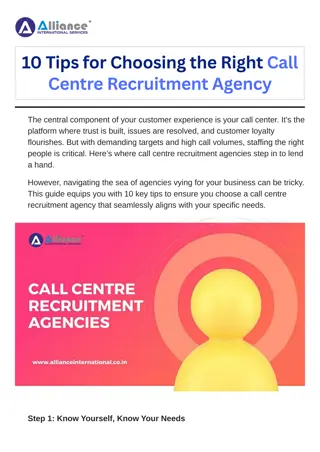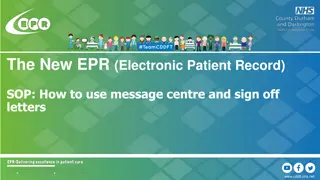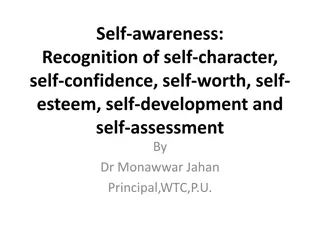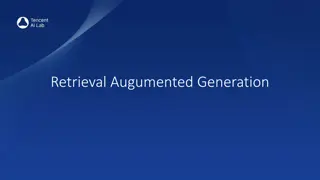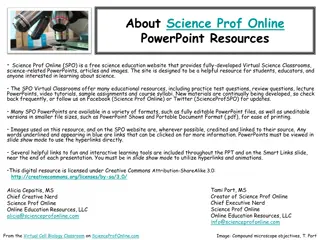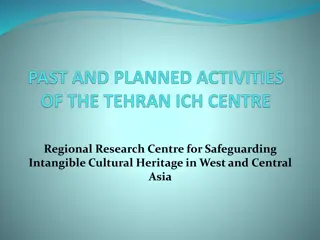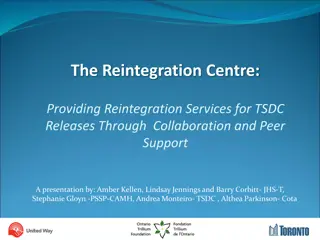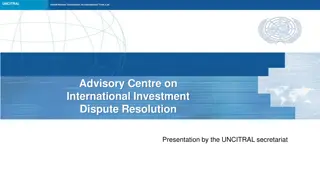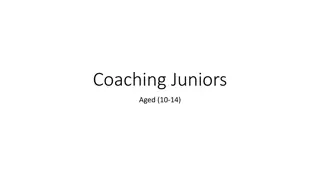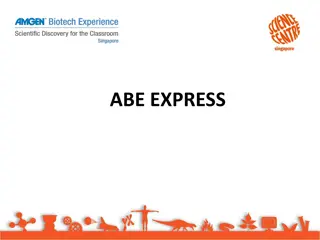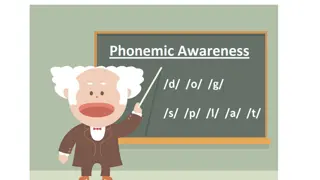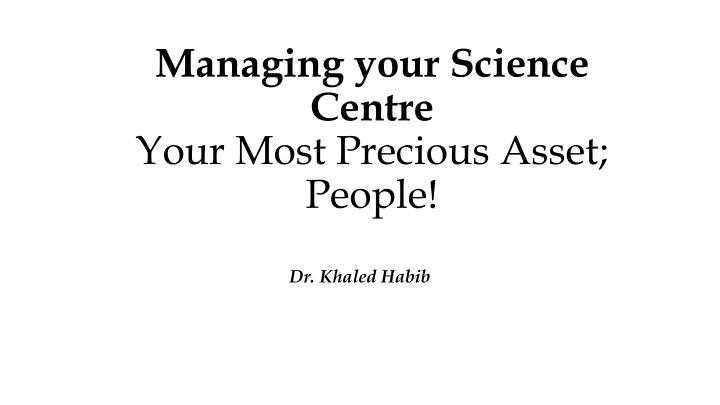
Managing Your Science Centre - People, Awareness & Performance Models
Explore the key models for managing a Science Centre's most precious asset - its people. Dive into the Johari's Window, People Management Building Blocks, and Performance Management models. Discover the top talents profile, talent assessment methods, and assessment center process.
Uploaded on | 2 Views
Download Presentation

Please find below an Image/Link to download the presentation.
The content on the website is provided AS IS for your information and personal use only. It may not be sold, licensed, or shared on other websites without obtaining consent from the author. If you encounter any issues during the download, it is possible that the publisher has removed the file from their server.
You are allowed to download the files provided on this website for personal or commercial use, subject to the condition that they are used lawfully. All files are the property of their respective owners.
The content on the website is provided AS IS for your information and personal use only. It may not be sold, licensed, or shared on other websites without obtaining consent from the author.
E N D
Presentation Transcript
Managing your Science Centre Your Most Precious Asset; People! Dr. Khaled Habib
The Famous Awareness Model Johari s Window Blind Spot Arena Facade Unknown
The Performance Management Model Tools and support for performance Milestones, Time Lines KPIs, Motivation, Incentives Specific Goals Individual and team Performance Assessment Training, Empowerment Periodic reviews Promotion and Rotation Assessment Compensation, Awards and Recognition Promotions and Lateral Moves Career Path
Top Talents: The Perfect Profile Competencies Holds People Builds Change Self Awareness Acts Decisively Customer and Grows Leaders Influence and Accountability Strategic and One Company Organizations Market Needs Commits to Accountable Anticipates Innovative Inclusion Thinking Insight, Seizes Agile Experiences Exposure to Multiple Markets/Business Models Leading Increasingly Large & Complex Teams Externally Focused Roles/ Projects Leading a Start- up or Growth Business Global Experience Cross-functional Experience Leading a Fix- it/Turn-around Influencing Without Authority Derailers Unable/Unwilling to Adapt and Grow Excessive Interest Self- Lack of Courage and Conviction Overly Controlling Style Pattern of Leaving Behind Weak or Mediocre Teams Says One Thing - Does Another
Assessing Talents Assessment Centers Performance Management 360 degrees Mentors Psychometric Analysis Projects Interviews
A Typical Assessment Center Candidates participate in a series of exercises that simulate on-the-job situations Trained assessors carefully observe and document the behaviors displayed by the participants. Each assessor observes each participant at least once Assessors individually write evaluation reports, documenting their observations of each participant's performance Assessors integrate the data through a consensus discussion process, led by the center administrator, who documents the ratings and decisions Each participant receives objective performance information from the administrator or one of the assessors
Types of simulation exercises In-basket Oral presentation Leaderless group discussion Assigned roles or not Competitive vs. cooperative Scheduling Analysis Fact-finding Interaction Subordinate Peer Customer Sales call Production exercise
6 Box Grid For Performance Potential POTENTIAL Sustainable Significant Key Colleagues Strong Contributors Track record of high performance and/or demonstrated mastery of current assignment. Upward potential may be limited. Special experience / technical knowledge would be difficult to replace. Develop in place and/or consider lateral moves. Track record of highest levels of performance with significant upward potential. Demonstrated capability to assume multiple higher-level leadership roles. Role model for Pfizer Values and Leader Behaviors. True organization asset in top tier of talent. Provide stretch assignments, targeted development. Place in key jobs. High PERFORMANCE Emerging Colleagues Solid Performers Individual with solid performance and great potential. Has capacity to be a Key Colleague over time with focused coaching and development. Develop in place with focus on specific capabilities required for future assignments. Satisfactory performance with limited upward potential over time. Consistently meets expectations. Medium Develop in place. Assess if blocking key colleagues and/or developmental positions. Under Performers Colleagues In Transition Individuals with high potential in a new position, role or development assignment. Too soon to assess. Develop in place as individual transitions to new role. Should not be in this box for more than 1 year. Low level of performance with little upward potential. Need to significantly improve results and behaviors. Low Move aside and establish improvement plan if "blocking" key colleagues and/or developmental positions. If does not make progress, move out. Should not be in this box more than 1 year.




